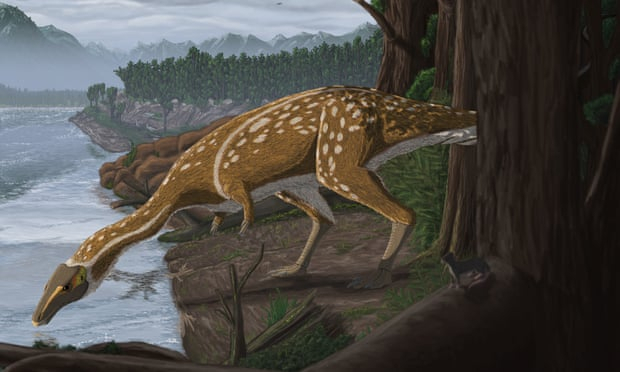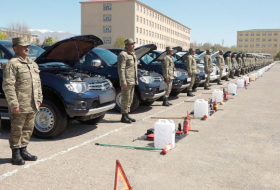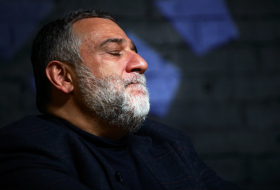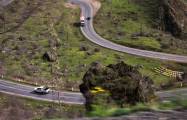The elaphrosaur was a member of the theropod family of dinosaurs that included all of the predatory species. It stood about the height of a small emu, measuring 2m from its head to the end of a long tail, and had short arms, each ending in four fingers.
Stephen Poropat, the lead researcher behind the find, at Swinburne University of Technology in Melbourne, said elaphrosaurs were “really rare,” with just three named species from Tanzania, China and Argentina. “This is the first record of the group in Australia, and only the second Cretaceous record worldwide.”
“These are some of the most puzzling theropod dinosaurs, as they are known from such few fossils,” said Steve Brusatte, a palaeontologist at the University of Edinburgh, who was not involved in the research. “They seem to have been lightly built, fast-running, long-necked theropods which traded the carnivorous diet of their ancestors and become omnivores.”
Revealed in the journal Gondwana Research, the fossil – which consists of a single vertebra – was discovered in 2015 at a dig site called Eric the Red West near Cape Otway, about three hours’ drive south-west of Melbourne.
Rather than the typical desert environments where fossils are often found, digs here led by the Melbourne Museum extract fossils from immense hard grey slabs of rock along the coastline, which are frequently inundated with seawater.
“One of the unusual things about this site is that the first hour or two on a dig here is spent shovelling wet sand,” said Swinburne University PhD student Adele Pentland, a co-author of the study.
Found by a volunteer participant in the dig, Jessica Parker, the unusual 5cm-long vertebra ended up in the collection of the Melbourne Museum. Based on the elongate shape of the delicate bone, it was first thought to have been from a flying pterosaur, rather than a dinosaur.
It was only several years later, when Pentland came to study the bone as part of her research on Australian pterosaurs, that the researchers realised it was something else entirely.
“I’d heard about this beautiful-looking pterosaur vertebra in the collection. It said pterosaur on the label and had been identified [as such] by the person who had prepared it,” she said. But pterosaur neck vertebrae are very distinctive, Pentland said. They all have a ball at the head end, and a socket at the tail end. But this bone had sockets, or concave surfaces, at both ends, meaning it could not have belonged to a pterosaur.
“So we went back to square one and started going through textbooks, trying to work out what kind of vertebra it was,” Poropat said. After establishing that the bone was from a theropod, they eventually hit upon an African dinosaur from the Jurassic called Elaphrosaurus, which has neck vertebrae “about four times as long as they are tall, which is unusual for theropods”.
“The beauty of this neck vertebra is that it was particularly informative, just because elaphrosaur neck vertebra are so weird compared to other dinosaurs,” Poropat said.
While the Australian elaphrosaur is know from just a single bone, its Jurassic-era Chinese relative Limusaurus is know from a whole series of fossil skeletons from babies up to full adults. These show it had the sharp teeth of a predator as a baby, which it lost upon maturity, perhaps transitioning to a diet of mostly plants.
“Among elaphrosaurs, skulls are only known for Limusaurus, and they show that the juveniles had teeth, whereas the adults had beaks,” Poropat said. “Presumably, this indicates a dietary shift, but from what to what is unclear. I’d speculate that it was primarily herbivorous [as an adult], but might have been an opportunistic predator of small animals.”
Brusatte said the new find was “a great example of how one fossil bone can tell a huge story”.
“This discovery greatly expands the range of these animals … They were probably a widespread, and perhaps even global, group of dinosaurs, which we haven’t yet appreciated because of the scanty clues they left behind.”
The new find shows they ranged even into southern polar environments.
As Australia was much further south 110m years ago, these Victorian dinosaurs would have been living within the Antarctic Circle. While the world was much warmer during the Cretaceous, they would still have had to endure months of darkness during winter and temperatures that periodically dipped below freezing.
Nevertheless, other fossils show there was a great diversity of life there. Forests of conifers similar to monkey puzzles and gingko trees had understories carpeted with cycads, ferns and horsetails. Animals included a variety of dinosaurs, as well as turtles, fish and marine reptiles.
Further expeditions to the Eric the Red West site have been thwarted twice this year – first by the bushfire crisis and then Covid-19. But Poropat said many fossils awaited excavation and there was a “high chance” there were more elaphrosaur bones to be found.
More about: #Australia















































